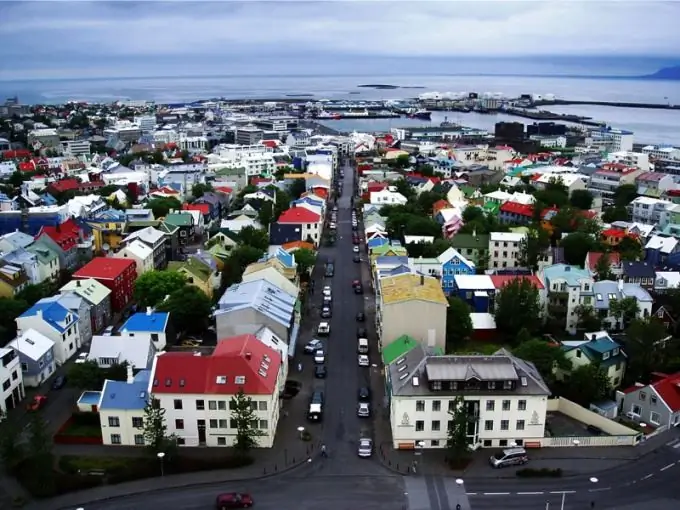People have been using the resources of natural thermal springs for a long time. Modern technologies make it possible to heat an entire city with hot water from sources, and the capital of Iceland is an example of this.

Instructions
Step 1
The capital of Iceland is Reykjavik. It was founded at the end of the 9th century and over time from an immigrant settlement turned into a metropolis. Today the population of the capital is about 120 thousand people.
Step 2
The name Reykjavik literally means smoking bay. The city got this name because of the clouds of water vapor rising from the hot springs. Deep in the bowels of the earth, water heats up to high temperatures, and can rise to the surface through cracks and cracks in the earth's crust. Iceland is one such geographic place where water finds its way out in the form of thermal springs and steam. The island is part of the volcanically active Mid-Atlantic Ridge that separates two tectonic plates.
Step 3
Iceland has the largest and most sophisticated geothermal district heating and water distribution system in the world that meets the highest international standards. Geothermal areas near Reykjavik provide hot water for power plants, which provide electricity and heat to 95% of the city's buildings every day. Typically, plants use water from sources of higher and lower temperatures for different needs.
Step 4
Water of a lower temperature, up to 150 ° C, is supplied as hot water for the population, and is also used to heat buildings through the city distribution system, which consists of more than 1,300 km of pipeline. Water of a higher temperature, from 200 ° C, is used to generate electricity. Waste water must pass through heat exchangers and wastewater treatment plants before entering the city system. In this system, the cooled water is heated by adding hotter water, or drained directly into the sewer.
Step 5
About 65 million cubic meters of hot water is produced annually, meeting the various needs of the population. Heating takes 85% of the water, bathing and washing account for 15%. Not only houses are heated in Reykjavik, but also swimming pools, greenhouses, as well as 740 thousand square meters of roads and sidewalks on which snow accumulates. In the southern part of the capital, massive containers were built to hold 20 million liters of hot water for use in winter.







